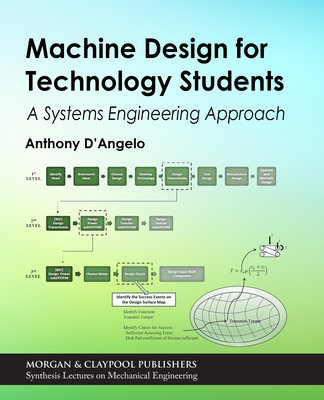Machine Design for Technology Students: A Systems Engineering Approach
暫譯: 技術學生的機械設計:系統工程方法
D'Angelo, Anthony
- 出版商: Morgan & Claypool
- 出版日期: 2020-10-26
- 售價: $1,670
- 貴賓價: 9.5 折 $1,587
- 語言: 英文
- 頁數: 127
- 裝訂: Quality Paper - also called trade paper
- ISBN: 1636390277
- ISBN-13: 9781636390277
-
相關分類:
工程數學 Engineering-mathematics
海外代購書籍(需單獨結帳)
相關主題
商品描述
This book is intended for students taking a Machine Design course leadimachig to a Mechanical Engineering Technology degree. It can be adapted to a Machine Design course for Mechanical Engineering students or used as a reference for adopting systems engineering into a design course. The book introduces the fundamentals of systems engineering, the concept of synthesis, and the basics of trade-off studies. It covers the use of a functional flow block diagram to transform design requirements into the design space to identify all success modes.
The book discusses fundamental stress analysis for structures under axial, torsional, or bending loads. In addition, the book discusses the development of analyzing shafts under combined loads by using Mohr's circle and failure mode criterion. Chapter 3 provides an overview of fatigue and the process to develop the shaft-sizing equations under dynamic loading conditions.
Chapter 4 discusses power equations and the nomenclature and stress analysis for spur and straight bevel gears and equations for analyzing gear trains. Other machine component topics include derivation of the disc clutch and its relationship to compression springs, derivation of the flat belt equations, roller and ball bearing life equations, roller chains, and keyways.
Chapter 5 introduces the area of computational machine design and provides codes for developing simple and powerful computational methods to solve: cross product required to calculate the torques and bending moments on shafts, 1D stress analysis, reaction loads on support bearings, Mohr's circle, shaft sizing under dynamic loading, and cone clutch.
The final chapter shows how to integrate Systems Engineering into machine design for a capstone project as a project-based collaborative design methodology. The chapter shows how each design requirement is transformed through the design space to identify the proper engineering equations.
商品描述(中文翻譯)
這本書是為修習機械設計課程的學生所編寫,該課程通往機械工程技術學位。它可以調整為機械工程學生的機械設計課程,或作為將系統工程納入設計課程的參考書。書中介紹了系統工程的基本原則、綜合概念以及折衷研究的基礎。它涵蓋了使用功能流動方塊圖將設計需求轉換為設計空間,以識別所有成功模式。
本書討論了在軸向、扭轉或彎曲載荷下結構的基本應力分析。此外,本書還討論了使用莫爾圓(Mohr's circle)和失效模式準則分析在組合載荷下的軸的發展。第三章提供了疲勞的概述以及在動態載荷條件下發展軸尺寸方程的過程。
第四章討論了功率方程、齒輪和直齒錐齒輪的命名法及其應力分析,以及分析齒輪系的方程。其他機械元件主題包括盤式離合器的推導及其與壓縮彈簧的關係、平帶方程的推導、滾子和球軸承的壽命方程、滾子鏈條和鍵槽。
第五章介紹了計算機械設計的領域,並提供了開發簡單而強大的計算方法的代碼,以解決:計算軸上的扭矩和彎矩所需的叉積、1D應力分析、支撐軸承上的反作用力、莫爾圓、動態載荷下的軸尺寸以及圓錐離合器。
最後一章展示了如何將系統工程整合到機械設計中,以作為一個基於項目的協作設計方法的畢業專案。該章節展示了每個設計需求如何通過設計空間轉換,以識別適當的工程方程。











